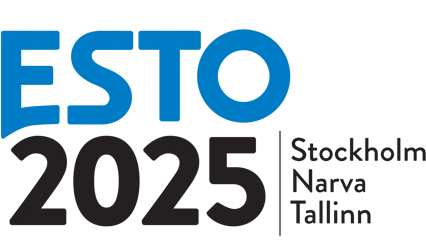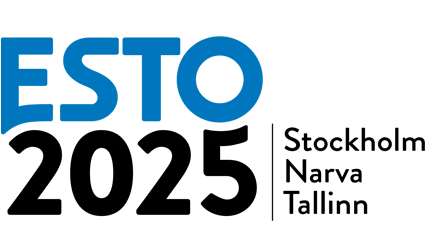30.06 at 11:40–22:00
Estonian / English
Tickets: 45 EUR – tickets available at Piletitasku ticket office HERE >>
Free for ESTO passport holders – register here by 20 June at the latest.
ITINERARY
11:40 Bus departs from Meresuu SPA Hotel in Narva-Jõesuu
(Luggage is taken along. The bus will take us to the Narva-Jõesuu harbour. The luggage stays on the bus. The bus will wait for us at the Narva harbour.)
11:45 Bus stops at Narva-Jõesuu harbour.
12:00 Boat trip along the Narva River, audioguide History of Narva-Jõesuu
Cruise Along the EU Border – Narva River
30.06 12:00–13:20
Starting point: Narva-Jõesuu port
End point: Narva port
Important information: an identity document is required, including for children.
Have you already been on the Narva River? From June to October you can cruise along the river between Narva and Narva-Jõesuu. The comfortable, modern, double-decker, spacious passenger ferry Caroline Tore departs regularly twice a day (three times a day during ESTO). During the cruise, you can enjoy views of the river banks of the river and a glimpse of Russia. The boat can accommodate up to 180 passengers with warm cabin seating for up to 60 people.
You can also listen to an audio guide prepared by the mayor of Narva, Katri Raik, that has colourful texts about the history of Narva and Narva-Jõesuu, and details the role the Narva River has played in the region’s development in different historical periods.
Independent travel: Regular departures between Narva and Narva-Jõesuu:
From Narva: 10:00, 14:00, 17:00
From Narva-Jõesuu: 12:00, 15:30, 19:00
Information and group bookings: +372 5559 5550
Presale of tickets: www.sunlines.ee
BOAT RIDE ON THE NARVA RIVER
13:20 Arrival at Narva harbour.
13:30–14.30 Lunch in restaurant KAAR, Joala 20
* Meal selection is made during registration. Registration is binding.
14:45–16:00 Bus tour to Kreenholm: the history of the textile giant
Kreenholm: the history of the textile giant
Organiser: Narva Museum
Nothing equals the Kreenholm factory – this enterprise, which roared between Narva’s foaming rapids with more than 10,000 workers, was unrivalled in Russia or Europe. In 1857, Ludwig Knoop (1821-1894) established a cotton factory on Kreenholm Island between Narva’s rapids that shaped the life of the region for the next 160 years. And although the machines no longer work in Kreenholm, the workers no longer bustle in the factories and the Narva rapids are only open a couple of times a year, the industrial architecture of Kreenholm is still fascinating, with its huge industrial park recalling the glory days of yesteryear. Amidst the monumental industrial architecture, visitors get a glimpse of the manufactory’s more than 160-year history.
You can buy the book “Kreenholm” in the Narva Museum shop.
16:00 Bus leaves Kreenholm
16:25 Bus arrives at Vaivara Sinimägede Museum
16:30–18:15 Sinimäed 1944 and Grenadier Hill visit
Sinimäed 1944 and Grenadier Hill visit
Organiser: Vaivara Sinimägede Museum
The Vaivara Sinimägede Museum’s exhibition is dedicated to the 1944 battles on the Narva River and in the Sinimäed. The museum displays weapons, uniforms, wartime photos, propaganda posters of the warring sides, and more. In addition to anti-tank guns, mortars and hand-held weapons, the museum displays soldiers’ personal items, from portable cooking pots to felt boots. In the museum’s courtyard, you can admire Red Army howitzers and war debris found in the marsh and on the ground. The tour also takes you to Grenadier Hill, which has an important place in Estonian military history.
18:15 Bus departs from Sinimäed and heads towards Tallinn along the E 20 highway.
19:00 Dinner at Liimala, Tulivee restaurant
*Meal selection is made during registration. Registration is binding.
20:00 The history of bootlegging on the Northern Coast
The history of bootlegging on the Northern Coast
Location: Tulivee Bootlegging Museum, Liimala
Organiser: Tulivee
in Estonian with voluntary translation to English
After dinner at Tulivee (Firewater) restaurant on Liimala beach, visit the Tulivee Bootlegging Museum, where a local guide will tell you some exciting stories. It is the turbulent 1920s and 1930s, when the young Republic of Estonia has appeared on the world map. In Finland, however, it is the time of prohibition. The people of the coastal villages of Northern Estonia create a new industry in the economy of the newly born small country, despite the prohibitions: bootlegging – the Estonian version of the Cosa Nostra. The forbidden firewater becomes Northern Estonia’s most famous and dangerous export. The Tulivee Tourist Centre tells stories that actually happened in those dark times.
Explore the museum
20:00 Bus departs from Liimala towards Tallinn
21:30 Bus arrives in Tallinn



